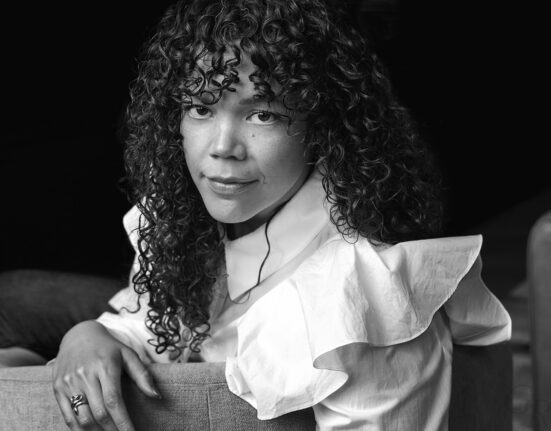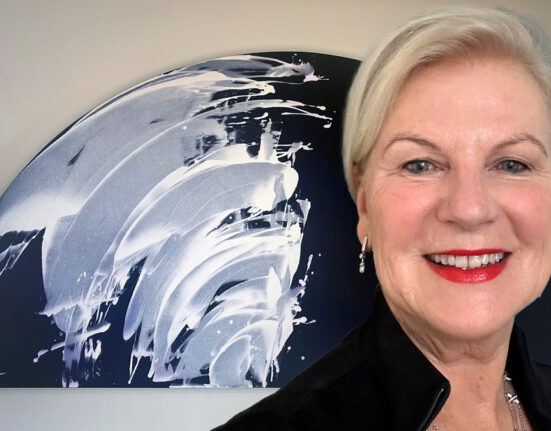The art industry is opaque and full of asymmetrical information. Art gallery merchants have far more knowledge and expertise about the pieces they’re selling than the buyers. So how does an everyday investor avoid getting ripped off when buying fine art? By doing research.
Why Invest in Art?
At a 2017 auction, the painting “Salvador Mundi” by famous artist and inventor Leonardo da Vinci sold for $450 million. But in 1958, “Salvador Mundi” only garnered $60 at auction under suspicion that the work was just a copy. Going from $60 to $450 million in a span of 60 years? The best stock investors would be jealous of that type of valuation increase in the art market.
Finding assets not connected to public markets involves some tradeoffs. The practice of buying art (especially contemporary art) is simple, but selling art can be far more complicated. Art isn’t like a stock or mutual fund that you can ignore for 20 years and reap huge profits.
Buying art isn’t just a financial decision; it’s an emotional one, too. Not only does a piece of art need intrinsic value, but it also must appeal to the individual buyer. This asset class brings taste into the equation. Here are some things to think about if you want to learn how to start investing in art.
Benefits of Investing in Art
Artwork can e offer different benefits than traditional assets, particularly when you consider diversification, aesthetic appeal and lack of depreciation. Your investment adviser might remind you that a masterwork is difficult to care for, or you might speak to art advisers who tell you that the painting will sell for millions in a short time. Even so, you must approach this part of your investment portfolio with wisdom and willingness to take a risk.
Diversification Away from Market Risk
When dealing with financial markets, risk is always on the table. Market risk is the systemic risk inherent to the stock market that can’t be diversified away. No matter how many cheap index funds you buy, you’re still going to lose money during a downturn.
Pieces of art aren’t correlated to any stock index or market. By buying art, you create a store of value completely separate from stock and bond market assets.
Art collectors push their money away from the global economy, without the need for an investment manager and with the option for a repeat sale on an item that is still appreciating.
Aesthetically Appealing Assets
Does looking at the shares in your brokerage account excite you? Probably not. On the other hand, art is an asset you can hang on your wall and enjoy while it appreciates.
Investment opportunities might abound when you make connections amongst people who share your tastes. Wealth managers might even advise you to look at art marketplaces outside of massive auction houses like Art Basel and small galleries.
No Depreciation
Houses deteriorate and cars break down. Art doesn’t depreciate, though. A 500-year-old painting is more valuable today compared to when it was commissioned by the European king who first wanted it.
An art asset can have value for someone, somewhere. Be it Basquiat, Jackson Pollock or Andy Warhol, its likely there’s someone who is willing to adjust their bottom line to acquire that piece at some point in the future.
Considerations Before Investing
As you might imagine, there are also a few drawbacks to investing in artwork over your garden-variety mutual funds.
One-sided Information Channels
Unless you’re an artist, critic or art gallery owner, you probably won’t be able to judge a piece of art’s authenticity just by looking at it. Art transactions often have one party with a litany of inside info (the seller) and one who must take their word for it (the buyer). Artwork doesn’t have an income statement or P/E ratio.
Illiquid Assets
Like investing in real estate, art investments are highly illiquid assets and selling for quick cash is difficult. A painting can’t be quickly sold for profit without taking it through the proper channels. If you need cash in a hurry, an art collection probably won’t do you any favors.
High Commissions from Art Dealers
Like all opaque industries, the art world has its gatekeepers. These include gallery owners and dealers who will happily help you sell your art collection — for a substantial fee. Many gallery owners charge a commission of up to 50% on each piece sold, so if you want to sell, be prepared for some sticker shock.
Types of Art You Can Invest In
If you’ve weighed the benefits and considerations and want to start investing in art, you’ll need to know what to buy. Art can be broken down into different classes just like stocks on the broader market. Some pieces of art will be safe with practically guaranteed returns; others will be far more speculative. Here’s how to break it down.
Works of Old Masters
Pieces from the world’s most renowned artists carry prestige, notoriety and big price tags. The Old Masters are artists from 18th-century Europe, especially during the Renaissance period.
Leonardo da Vinci is a classic example of the old masters, and works from these artists can be up to 500 years old. Pieces from the old masters are the rarest and most valuable in the industry. Think of them as the Amazons and Googles of the art world.
Blue Chip Pieces
Blue chips are companies with solid track records of sustainability and profitability. In the art world, blue chips share a similar definition. While not on par with the old masters’ works, blue-chip art comes from well-known artists with a lasting cultural appeal, like Andy Warhol and Pablo Picasso. Blue chip artwork usually sells for more than $10,000 per piece.
Up-and-Coming Artists
The art world isn’t without its speculators and that’s why many investors seek out lesser-known artists, hoping to cash in on the next Salvador Dali or Ai Weiwei. Up-and-coming artists often produce high-quality work at a fraction of the price of blue chippers since they have yet to receive recognition for their art.
This is where a bit of expertise comes in handy. Speculating on art can be a profitable endeavor if you can spot something other experts have missed.
Art Funds
Don’t have a clue when it comes to valuing a painting or sculpture? Nervous about eager gallery owners who might be too eager to unload slow-moving pieces onto unsuspecting buyers with deep pockets?
Stock investors who don’t know which shares to buy can buy the whole market by owning an index. Art investors can do the same through privately managed art funds.
What to Look for in a Piece of Art
Investing in art isn’t just a hop, skip and jump to an Amazon-like site, and research can be tricky. Here’s what to look for.
- Originality: Make sure every piece of art you buy matches the artist’s original style. If something seems out of place or the work isn’t similar to other pieces by the same artist, it’s a red flag.
- Artist background: It isn’t just the artwork you need to research but the artists, too. Before buying a piece, find out the artist’s history, who he or she trained under, what styles he or she prefers and where his or her art has been shown in the past. The more detail you can find about a particular artist, the more valuable the work tends to be.
- Outside opinions: The art world is no place for false bravado. If you don’t know what you’re doing, sellers may milk you for every possible dollar. Instead, find some trustworthy outside opinions about every piece of art you’re considering.
- Fits in your collection: Look for works that won’t clash with your current collection. Remember, you can both appreciate the aesthetics of your art collection and hope its value triples over time.
How to Invest in Art Works
Now that you’ve got the basics down, let’s go over a step-by-step plan to buying your first work of art. Keep the benefits and considerations listed above in mind when you go art shopping and only buy a piece because you like it, not because a gallery owner says it’s a lock to double in price in one year.
What You’ll Need Before You Start
Before buying art, you’ll need a place to display it or store it. Art doesn’t depreciate, but it can become damaged if handled improperly. If you have an extra room in your house away from direct sunlight and extreme temperatures, consider using that location as an art display. Set a budget for your first art purchase and commit to it.
Find a Platform That Works For You
Auction houses: Sotheby’s and Christie’s are the two most popular auction houses for artwork.
Art galleries: Cities like New York are full of art galleries with works available for purchase. Take your time and shop around at a few different ones.
Individual sellers: Finding art from an individual seller can be profitable, especially if the art has been mispriced. Additionally, individual sellers usually don’t have the expertise of a gallery owner or auction house. If you want to buy from an individual seller, make sure your research on the piece is thorough.
Online marketplaces: You can buy art right from your computer using online marketplaces like Masterworks.
Create Your Investing Strategy
Now it’s time to establish a plan of attack. But what should your art investing strategy be? A lot will depend on your budget, time and display capabilities. Many art investment strategies look very similar to their stock market cousins. Here are a few:
- Speculation: Buying art from lesser-known artists and holding it until they become famous.
- Buy-and-hold: Locating old masterworks or blue-chip pieces and holding them as their value increases.
Purchase Your Piece
Once you have a plan, it’s time to hunt for your first piece. Leverage auction houses, galleries and individual sellers to locate the best piece of art to begin your collection. Negotiate a price within your budget and purchase the piece.
Sell When You’re Ready
A good rule of thumb is to keep any artwork you purchase for at least three years while it appreciates. Be sure to keep all documentation proving the work’s authenticity. Display or store your piece properly to prevent damage and sell when you’ve made a significant enough return.
Insuring Your Art Investment
If you’re investing in pieces of art, you’ll also want to buy art insurance to make sure your investment is secure. If you’re a collector of super high-end pieces, you may want to purchase a specific type of collector’s insurance, whether through a provider like Progressive, which offers fine art insurance, or a dedicated art insurer like AXA XL.
Investing in Art for Further Diversification
The art market is full of illiquid assets and asymmetric information, but that doesn’t mean it should be avoided. Fine art returns have beaten the S&P 500 in recent years, and art doesn’t move in lockstep with financial markets.
Becoming an art investor takes substantial capital and time, but you might consider art as a wealth builder and a way to separate assets from the financial markets.
Frequently Asked Questions
A
Fine art is a valuable investment that can appreciate in value over time. It provides both aesthetic and financial benefits, with subjective value influenced by factors such as artist reputation, rarity, and historical significance. Art can also serve as a hedge against inflation and provide diversification in an investment portfolio. Additionally, owning art brings joy, inspiration, and cultural enrichment.
A
Investing in art requires understanding the art market, the artist’s reputation, and the potential for the artwork to appreciate. It is also important to consider personal interest and enjoyment of the artwork. Consulting with experts or advisors is recommended before making significant art investments.
A
The risks of investing in art include the subjective nature of art valuation, the potential for art market fluctuations, the lack of liquidity in the art market, and the possibility of fraudulent or counterfeit artworks. Additionally, investing in art requires extensive knowledge and expertise to make informed decisions and minimize risks.







